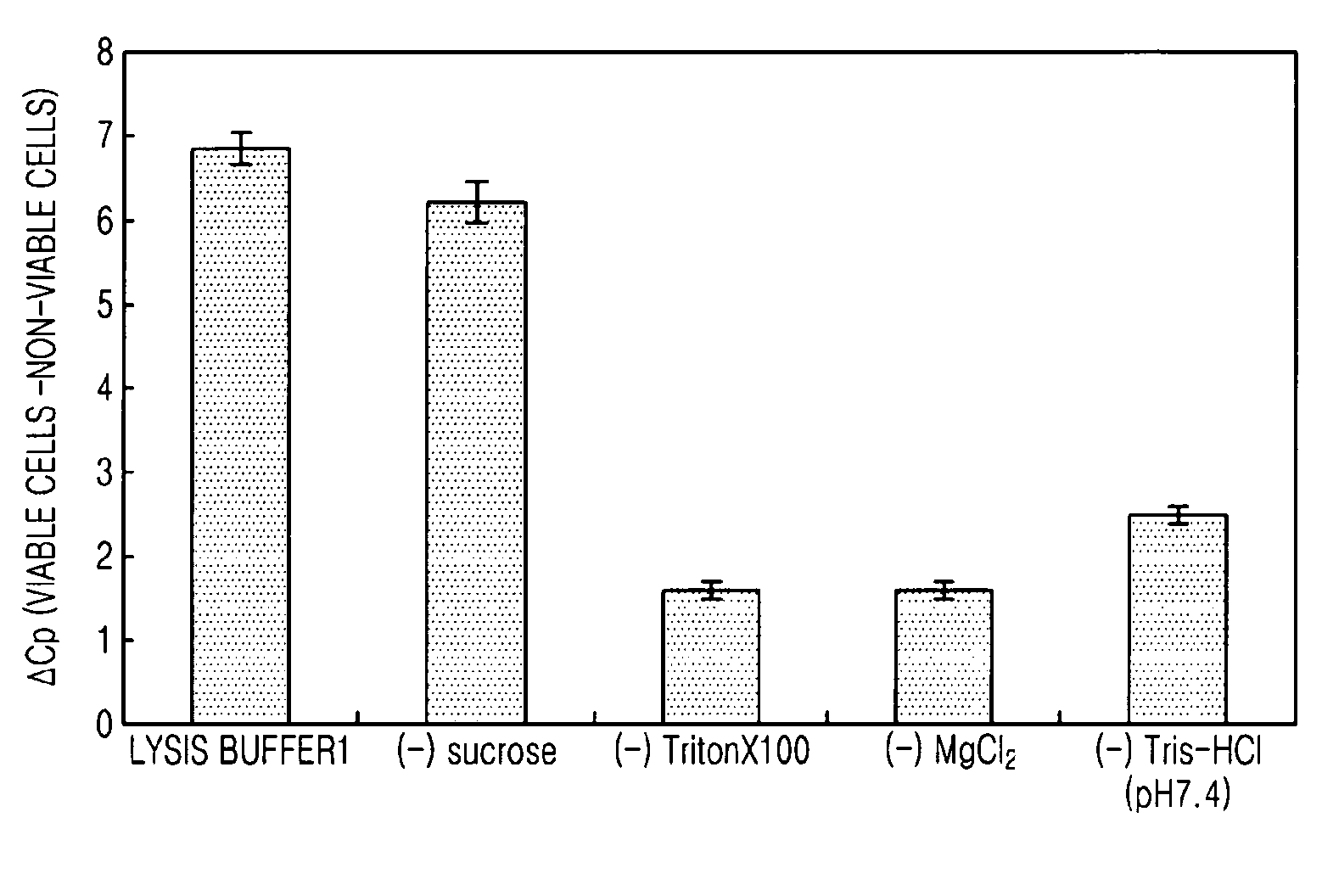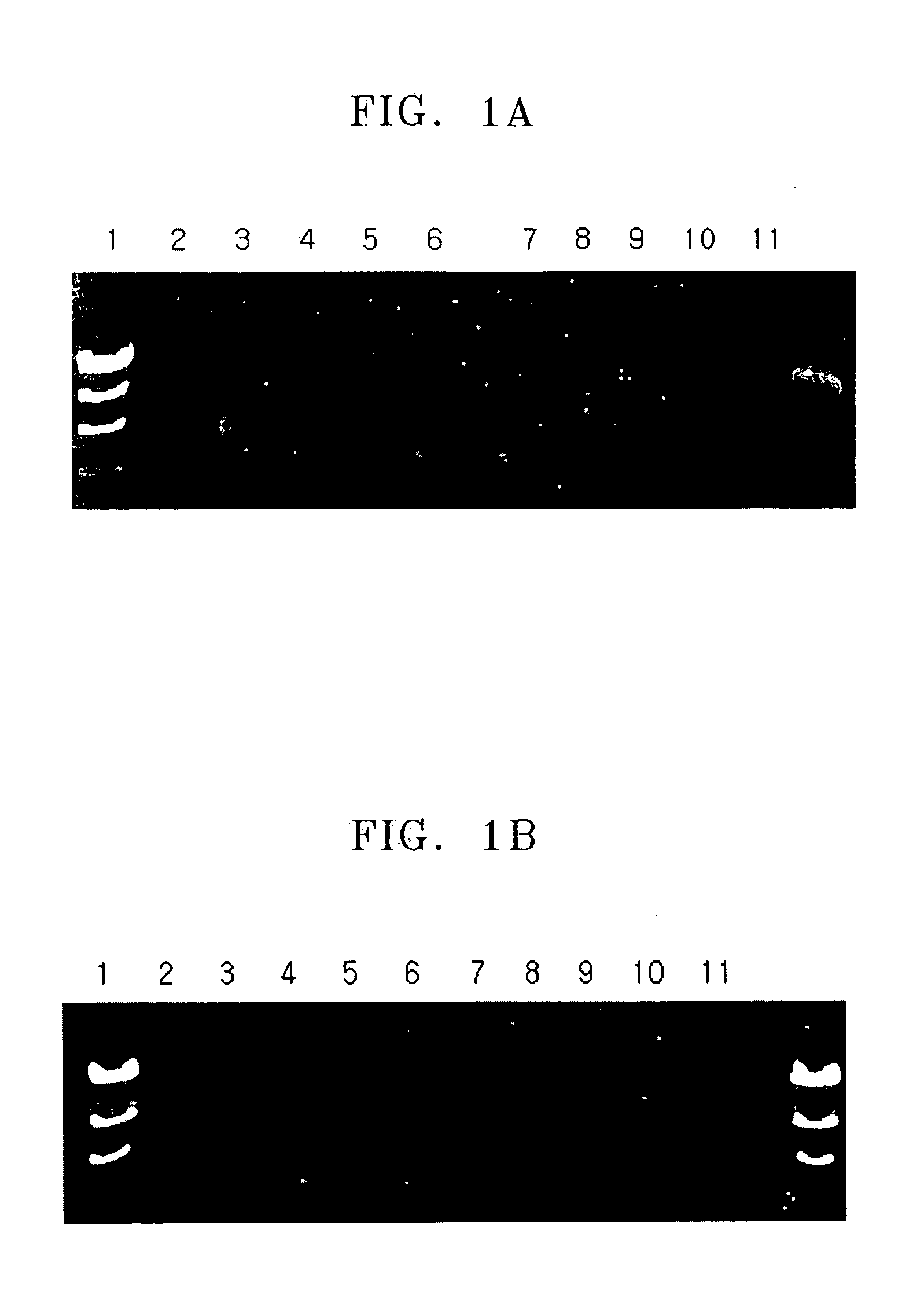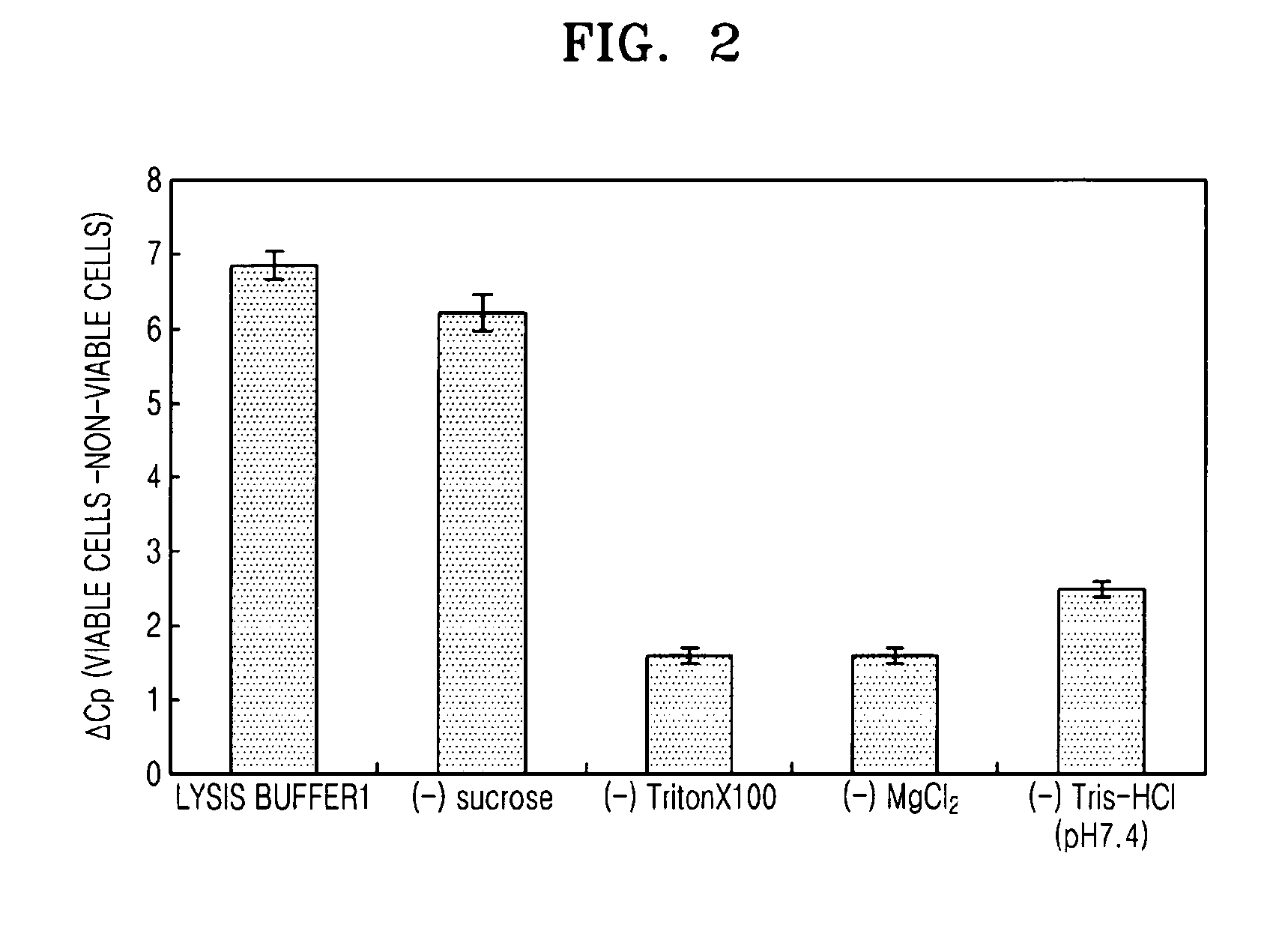Method of selectively lysing non-viable cells in cell population in sample
a cell population and non-viable technology, applied in the field of selectively lysing non-viable cells in cell population in sample, can solve the problems of false positive analysis, cell culture, and difficult to analyze the cell population by culturing
- Summary
- Abstract
- Description
- Claims
- Application Information
AI Technical Summary
Problems solved by technology
Method used
Image
Examples
example 1
Effects of Lysis Buffer
[0045]In the present example, effects of selective lysis of non-viable cells and viable cells with respect to the types of the lysis buffer were verified. Lysis buffer 1 contained 0.8M sucrose, 2.5 vol % of TritonX 100, 5 mM of MgCl2 and 30 mM of Tris HCl (pH 7.4), and Lysis buffer 2 contained 10 mM of KHCO3, 155 mM of NH4Cl, and 0.1 mM of EDTA, filter-sterilized using a 0.2 μm filter (Vogelstein, B. and Gillespie, D., Proc. Natl. Acad. Sci. USA 76, 615 (1979)).
[0046]Specifically, E. coli BL21 was inoculated in 10 mL of LB medium and cultured overnight, and then 1 mL of the culture was cultured in a new 10 mL medium for 2 hours, and the E. coli in its exponential phase was replaced to PBS to a concentration of 108 cells / ml, and this was used as viable cells. For non-viable cells, the same volume of viable cells was heat-treated at 72° C. for 15 minutes (Journal of Microbiological Methods 67 (2006) 310-320). 0.1-0.3 ml of the viable cells and the non-viable cel...
example 2
Effects of Each Components of the Lysis Buffer 1
[0050]In the present example, effects of selective lysis of non-viable cells with respect to the components of Lysis buffer 1 were verified. Lysis buffer 1 contained 0.8M sucrose, 2.5 vol % of TritonX 100, 5 mM of MgCl2 and 30 mM of Tris HCl (pH 7.4).
[0051]Specifically, E. coli BL21 was inoculated in 10 mL of LB medium and cultured overnight, and then 1 mL of the culture was cultured in a new 10 mL medium for 2 hours, and the E. coli in its exponential phase was replaced to PBS to a concentration of 108 cells / ml, and this was used as viable cells. For non-viable cells, the same volume of viable cells was heat-treated at 72° C. for 15 minutes (Journal of Microbiological Methods 67 (2006) 310-320). 0.1-0.3 ml of the viable cells and the non-viable cells obtained as such were each added to 1 mL of the Lysis buffer 1 and lysis buffers with each of sucrose, TritonX 100, MgCl2, and Tris-HCl (pH 7.4) removed from Lysis buffer 1 (1× buffer), a...
example 3
Verifying the Selective Lysis of Non-viable Cells by the Lysis Buffer
[0055]In the present example, it was verified through a fluorescent microscope that Lysis buffer 1 selectively lyses non-viable cells. Lysis buffer 1 contained 2.5 vol % of TritonX 100, 5 mM of MgCl2 and 30 mM of Tris HCl (pH 7.4).
[0056]Specifically, E. Coli BL21 was inoculated in 10 mL of LB medium and cultured overnight, and then 1 mL of the culture was cultured in a new 10 mL medium for 2 hours, and the E. coli in its exponential phase was added to PBS to a concentration of 108 cells / ml, which was used as viable cells. For non-viable cells, the same volume of viable cells was heat-treated at 72° C. for 15 minutes (Journal of Microbiological Methods 67 (2006) 310-320). 4.5 of propidium iodide (PI) dye and SYTO9 dye were each added to 1 ml of a mixture of non-viable cells and viable cells obtained above, 1 ml of the non-viable cells, and 1 ml of the viable cells each (Invitrogen L7012, LIVE / NON-VIABLE™ BacLight™ ...
PUM
 Login to View More
Login to View More Abstract
Description
Claims
Application Information
 Login to View More
Login to View More - R&D
- Intellectual Property
- Life Sciences
- Materials
- Tech Scout
- Unparalleled Data Quality
- Higher Quality Content
- 60% Fewer Hallucinations
Browse by: Latest US Patents, China's latest patents, Technical Efficacy Thesaurus, Application Domain, Technology Topic, Popular Technical Reports.
© 2025 PatSnap. All rights reserved.Legal|Privacy policy|Modern Slavery Act Transparency Statement|Sitemap|About US| Contact US: help@patsnap.com



